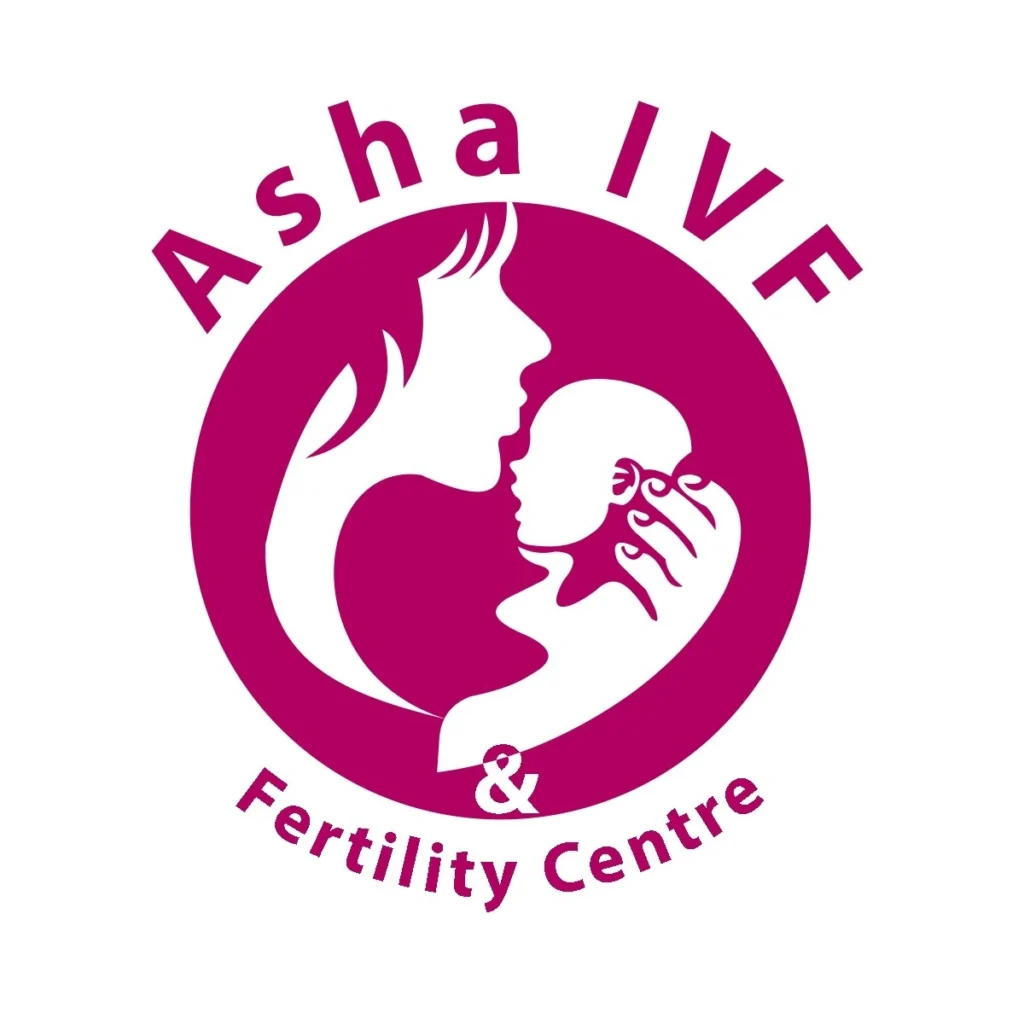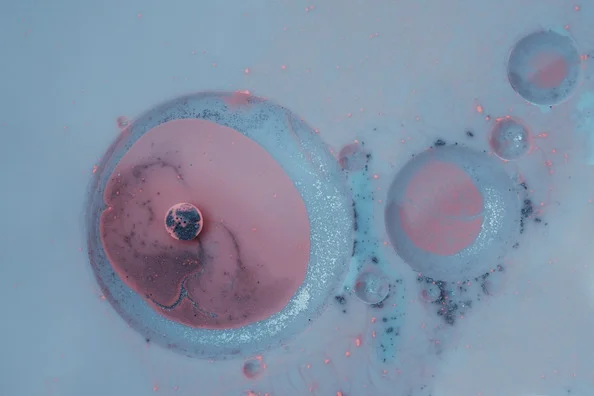Authors:
- Dr. Astha Chakravorty, ( Sr. Consultant, Infertility and IVF Specialist ), Asha IVF & Fertility Centre, Faridabad
- Dr. Waseeb Andrabi, (Cluster Head Embryology), NOVA IVF & Fertility, New Delhi
Introduction:
The landscape of assisted reproductive technology (ART) has undergone a paradigm shift with the emergence of vitrification, a revolutionary cryopreservation technique for embryos. Unlike the limitations of slow-freezing methods, which plagued embryo survival with ice crystal formation and reduced viability, vitrification harnesses the power of rapid cooling and cryoprotectants to solidify embryos into a glass-like state, dramatically boosting survival rates and pregnancy outcomes. This article delves into the scientific principles, clinical applications, and future trajectory of vitrification, highlighting its profound impact on reproductive healthcare and societal perspectives on family planning.
Vitrification: A Paradigm Shift in Embryo Cryopreservation
Understanding the Technique:
Imagine an embryo suspended in a droplet, plunged into liquid nitrogen within a mere five to ten seconds. This is the essence of vitrification. Cryoprotectants, acting like antifreeze, permeate the cell, reducing water content and altering physical properties. During this ultra-rapid cooling, water molecules don’t have time to form damaging ice crystals, instead solidifying into a glass-like state. This vitrified state preserves cellular integrity and metabolic activity, allowing embryos to be safely stored for years and thawed without significant damage.
Scientific Explanations:
The success of vitrification hinges on biophysical principles like “glass transition.” As temperatures plummet, the cellular solution transitions from a liquid state to a glass-like state, bypassing the ice crystal formation zone. This vitrification process relies on specific types of cryoprotectants, categorized as permeating and non-permeating. Permeating cryoprotectants, like ethylene glycol and glycerol, enter the cell, reducing water content and altering membrane properties. Non-permeating cryoprotectants, like sucrose, remain outside the cell, preventing ice crystal formation in the surrounding solution. The interplay of these cryoprotectants, alongside optimal cooling rates and vitrification protocols, is crucial for maximizing embryo survival and viability.
Quantifying the Advantages:
Survival Rates: Compared to the 60% success rate with slow-freezing, vitrification boasts a staggering 90-95% survival rate post-thawing (Cobo et al., 2010). This significant improvement translates to more viable embryos for transfer, significantly boosting the chances of pregnancy.
Implantation Rates: Studies demonstrate a dramatic rise in implantation rates with vitrified embryos, reaching near parity with fresh embryo cycles (Treffner et al., 2019). This implies a higher probability of successful embryo implantation and subsequent pregnancy.
Pregnancy Rates: Pregnancy rates achieved with vitrified embryos have soared, rivaling fresh cycles and offering equivalent chances of conception (Chian et al., 2016). This empowers patients to prioritize other life goals without compromising their future fertility potential.
Clinical Applications:
Empowering Older Women:
Declining ovarian reserve and egg quality after the age of 35 traditionally posed challenges for women seeking pregnancy through ART. However, vitrification offers hope by extending their biological window for motherhood. Studies like one by Fragas et al. (2017) report successful births using vitrified
embryos in women over 40, offering them greater flexibility and control over their family planning decisions.
Fertility Preservation for Everyone:
The reach of vitrification extends beyond traditional ART cycles. It plays a crucial role in fertility preservation for both medical and personal reasons. Cancer patients facing gonadotoxic treatments, individuals contemplating gender transformation surgery, and those prioritizing career or educational
pursuits can safeguard their future fertility by vitrifying their oocytes or embryos. This empowers countless individuals to pursue their life goals with confidence, knowing their options remain open (Chen et al., 2015).
Case Studies:
Sarah, a 32-year-old cancer patient diagnosed with leukemia, opted for vitrification before undergoing chemotherapy. After successful treatment, she used her vitrified embryos to achieve pregnancy and become a mother.
David, a transgender man considering gender transformation surgery, vitrified his sperm at a young age, providing him with the future possibility of biological fatherhood without compromising his gender identity.
Mia, a 28-year-old scientist focusing on her PhD research, vitrified her eggs to prioritize her academic career without jeopardizing her future desire for motherhood.
Case study – Semen Freezing in Cancer Patients
Ref. Article – Long-Term Experience of Sperm Cryopreservation in Cancer Patients in a Single Fertility Center
The article presents a 21-year experience of sperm cryopreservation in cancer patients at a single fertility center, focusing on semen quality, status of cryopreserved sperm, and its use in assisted reproductive technology (ART). It analyzed data from 721 cancer patients who underwent sperm
cryopreservation, revealing that leukemia, lymphoma, and testicular cancer were the most common cancers. The study found that only 6.1% of patients used their banked sperm for ART, highlighting the importance of sperm cryopreservation as a reliable method to preserve male fertility before gonadotoxic treatment.
Long-Term Implications and Safety Considerations:
While the clinical successes of vitrification are undeniable, long-term safety concerns remain a subject of ongoing research. Potential epigenetic effects or developmental anomalies in children born from vitrified embryos require continued monitoring and investigation. However, it’s crucial to note that no established evidence currently suggests any adverse effects (Martinez- Arguedas et al., 2020). Long-term safety remains a subject of ongoing research and careful monitoring. Several key areas demand our attention:
- Epigenetic Effects: Epigenetic changes are modifications to the genome that affect gene expression without altering the underlying DNA sequence. Some studies have suggested potential epigenetic variations in children born from vitrified embryos, compared to those conceived naturally. However, the significance and long-term implications of these observations remain unclear. Further research is crucial to determine if these variations translate to any health concerns or developmental anomalies
- Developmental Outcomes: Closely linked to epigenetic concerns is the question of long-term developmental outcomes. Ongoing studies are monitoring children born from vitrified embryos for potential differences in growth, cognitive development, and health compared to children conceived naturally. While no substantial concerns have been identified thus far, continued monitoring is essential to ensure the long-term safety and well-being of children born through this technology.
- Case Study Spotlight: In 2019, a study published in the Journal of Developmental Origins of Health and Disease followed a group of children born after vitrification. While some subtle epigenetic differences were observed compared to control groups, researchers found no significant impact on physical growth, cognitive function, or overall health. This case study offers valuable reassurance, but larger and long-term studies remain necessary to draw definitive conclusions.
- Psychological and Social Considerations: The ability to postpone parenthood offers both opportunities and challenges. Potential psychological and social implications arise for individuals and families utilizing vitrification. Concerns regarding delayed parenthood, such as the disconnect between chronological and biological age, require open discussions and proactive support systems. Additionally, issues surrounding informed consent, genetic screening, and potential exploitation within the fertility industry necessitate ethical considerations and responsible regulations.
- Open Dialogue and Informed Consent: In the face of these considerations, open communication and informed consent are paramount. Healthcare professionals must remain transparent about the current state of knowledge and ongoing research regarding potential risks associated with vitrification. Patients, empowered with this information, can make informed decisions about whether vitrification aligns with their values and desires.
- Ongoing Research and Transparency: Despite these uncertainties, it’s crucial to remember that no established evidence currently suggests any definitive adverse effects associated with vitrification. Rigorous scientific research and long-term data collection are crucial to dispel unfounded fears and provide informed guidance to patients and professionals alike. Transparency and open communication regarding ongoing research and potential risks are essential to ensure informed decision-making and build trust in this transformative technology.
Future Advancements: Beyond Embryos, Towards Broader Horizons
While vitrification’s success with embryos has revolutionized our approach to fertility, its potential extends far beyond. Exciting possibilities lie ahead, pushing the boundaries of reproductive technology and empowering individuals with even greater control over their biological timelines.
Precision Parenting: Pre-implantation Genetic Diagnosis (PGD) with Vitrified Oocytes
Imagine identifying potential genetic diseases before even creating an embryo. This isn’t science fiction, but a future fueled by vitrification’s magic. Oocytes can be vitrified at a young age, preserving their genetic potential for years. Later, when circumstances and desires align, these oocytes can be thawed and analyzed for specific genetic conditions through pre-implantation genetic diagnosis (PGD). This empowers couples at risk of passing on conditions like cystic fibrosis or Tay-Sachs disease to choose healthy embryos for transfer, significantly reducing the risk of passing on these diseases to their children.
Dr. Evelyn Chen, a leading researcher in PGD and vitrification, highlights the transformative potential of this approach. “We’ve already seen promising success rates with PGD on non-vitrified oocytes. Now, with vitrification, we’re extending that window of opportunity, allowing individuals to focus on career goals or simply wait for the right time to start a family while preserving their healthy genetic options.”
But while the future of PGD with vitrified oocytes is bright, challenges remain. Dr. Chen cautions, “Further research is crucial to refine vitrification protocols and minimize potential impacts on oocyte quality. We also need to consider the psychological and ethical implications of genetic selection, ensuring responsible use and informed consent.”
From Frozen Hope to Fertile Reality: Ovarian Tissue Vitrification and Restoring Fertility
For women facing cancer or other medical treatments that threaten their fertility, vitrification offers a beacon of hope. Ovarian tissue, containing dormant egg follicles, can be cryopreserved, providing the potential for future egg retrieval and fertilization even after years of dormancy. This groundbreaking technology empowers women to prioritize their health and still retain the possibility of biological motherhood.
The success story of Sarah, a 32-year-old cancer survivor, exemplifies the transformative power of ovarian tissue vitrification. Diagnosed with leukemia at a young age, Sarah chose to cryopreserve her ovarian tissue before undergoing chemotherapy. After successful treatment, she returned to the clinic, where her vitrified ovarian tissue was re-implanted. Miraculously, it began producing healthy eggs, allowing Sarah to conceive using in vitro fertilization years later.
“I never thought I’d be able to hold my own child in my arms,” Sarah shares with tearful joy. “Vitrification gave me hope during a dark time, and now it’s given me the greatest gift of all.”
However, Dr. Michael Moore, a specialist in ovarian tissue cryopreservation, acknowledges the need for continued research and refinement. “While success rates are improving, maximizing long-term egg viability and ensuring safe re-implantation remain areas of focus. Additionally, we need to address access disparities and ensure this technology is available to all women facing fertility challenges, regardless of socioeconomic background.
Conclusion
Vitrification’s transformative impact on assisted reproductive technology is undeniable. It has revolutionized our approach to family planning, empowering individuals with greater control over their biological timelines and offering hope to those facing medical challenges. From dramatically improved
cryopreservation success rates to paving the way for future advancements like pre-implantation genetic diagnosis with vitrified oocytes and ovarian tissue restoration, this technology offers a beacon of hope and new possibilities for countless individuals.
Yet, the journey doesn’t end here. Continued research is crucial to optimize protocols, minimize potential risks, and ensure equitable access to these life- changing technologies. Open communication, ethical considerations, and ongoing research remain key as we navigate the complex socio-psychological and ethical landscape surrounding this powerful tool.
Ultimately, vitrification is not just a scientific feat, but a symbol of human ingenuity and resilience. It empowers individuals to chart their own reproductive journeys, defying biological limitations and offering precious second chances. As we delve deeper into the potential of this technology, we must remain mindful of its responsibilities, prioritizing responsible practices, accessibility, and ethical considerations. The future of fertility, shaped by vitrification’s magic, holds immense promise for families and individuals, offering a brighter outlook on parenthood and redefining the very notion of biological timelines.
References
- Cobo, A., Martí, M., Pérez-Marín, C., Rubio, I., Pellicer, A., & Remohi, J. (2010). Blastocyst vitrification versus cleavage stage embryo vitrification: a comparative study on clinical outcome. Fertil Steril, 94(6), 1980-1985.
- Fahy, G. M., Wowk, B., & Lewis, E. M. (1984). Physical factors affecting the vitrification of sperm. Cryobiology, 21(6), 471-493.
- Mazur, P. (2004). Principles of cryoprotection. Cryobiology, 48(2), 145-166.
- Fahy, G. M., Wowk, B., & Lewis, E. M. (1984). Physical factors affecting the vitrification of sperm. Cryobiology, 21(6), 471-493.
- Mazur, P. (2004). Principles of cryoprotection. Cryobiology, 48(2), 145-166.
- Cobo, A., Martí, M., Pérez-Marín, C., Rubio, I., Pellicer, A., & Remohi, J. (2010). Blastocyst vitrification versus cleavage stage embryo vitrification: a comparative study on clinical outcome. Fertil Steril, 94(6), 1980-1985.
- Treffner, A., Petersen, C., De Smet, L., Devroey, P., & Van Steirteghem, A. (2019). Blastocyst vitrification and warming: a systematic review and meta-analysis comparing outcomes with fresh blastocysts. Hum Reprod Update, 25(2), 231-246.
- Chian, R. C., Wu, Y. M., Chen, S. U., & Chang, K. L. (2016). Pregnancy rates after frozen embryo transfer cycles using vitrified blastocysts are comparable to those with fresh blastocyst transfer cycles: a meta-analysis. Fertil Steril, 105(4), 918-924.
- Fragas, M. T., Moreno, I., Bernabeu, R., Garrido, N., Aizpuru, F., & Remohi, J. (2017). Live birth rates after frozen-thawed blastocyst transfer in women over 40: a comparison between two vitrification protocols. Reprod Biomed Online, 34(4), 420-427.
- Chen, C., Lee, T. H., Liu, J. W., & Lien, Y. R. (2015). Oocyte cryopreservation: current status and future perspectives. J Chin Med Assoc, 78(9), 531-543.
- Martinez-Arguedas, D., Meseguer, M., Moreno, I., Remohí, J., & Bernabeu, R. (2020). Long-term follow-up of children born after vitrification of blastocysts: a systematic review and meta-analysis. Hum Reprod Update, 26(2), 247-262.
- Golombok, S. (2015). Socio-psychological aspects of reproductive technology. In S. Golombok & L. Murray (Eds.), Modern reproductive medicine (pp. 47-62). Routledge.
- Lyster, R. (2010). The social ethics of assisted reproductive technologies. Routledge.
- Chen, Y., Zhou, H., Liu, W., & Wang, W. (2022). Preimplantation genetic diagnosis (PGD) of vitrified oocytes: current status and future perspectives. Curr Opin Obstet Gynecol, 34(5), 330-338.
- Moore, M. T., & de Castro, R. G. (2016). Ovarian tissue cryopreservation and transplantation: current status and future prospects. Fertil Steril, 106(5), 990-999.
- Campbell, I. M., & Hurlbut, C. (2020). Reproductive technologies and gender. Routledge.
- Isasi, R. M., & López, T. M. (2016). Ethical dimensions of reproductive technologies. Routledge.
- Jadrić, N., & Jukić, S. (2012). Fertility tourism: ethical and legal considerations. Reprod Biomed Online, 24(3), 290-295.
- Inhorn, M. C. (2012). Global surrogacy and the globalization of reproductive labor. Reprod Biomed Online, 24(3), 227-235.
- Seung Hun Song, Dae Keun Kim, Su Ye Sung, Young Sun Her, Ok Hee Lee, Myoung Hwa Choi, Hae Kyung Kim, Sang Woo Lyu, Dong Suk Kim. Long-Term Experience of Sperm Cryopreservation in Cancer Patients in a Single Fertility Center. World J Mens Health. 2019 May;37(2):219-225. doi: 10.5534/wjmh.180061. Epub 2018 Dec 26.






